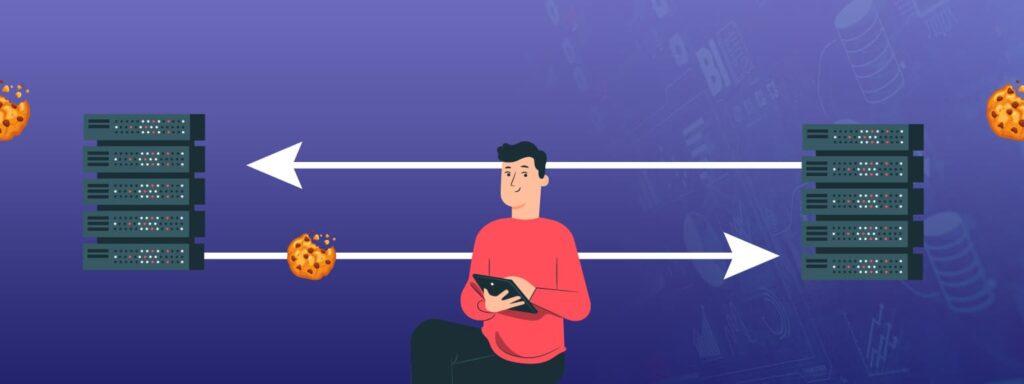
In our previous blog, we delved deep into the intricacies of CNAME in Adobe Analytics and highlighted the importance of grasping third-party cookies and cross-origin requests.
With the digital sphere becoming increasingly complex, it’s paramount for businesses to be well-acquainted with the pros and cons of available tools and methods. As we journey through this ever-evolving digital era, the expertise and seasoned skills of NextRow’s professionals stand out as a beacon, guiding countless organizations in making astute decisions. Let’s continue this exploration and see how your organization can benefit from a deeper understanding and strategic implementation.
In today’s era of data privacy and security, it’s imperative to understand the nuances of Adobe Analytics and the impact of CNAME on tracking. Let’s delve deep into the concept and see how it interacts with the challenges posed by third-party cookies and cross-origin requests.
What is CNAME in Adobe Analytics?
Simply put, a CNAME is a mechanism to mask Adobe’s Data Collection Server (DCS) with a domain of our own. Rather than directing requests to Adobe’s domains (like adobedc.net, 2o7.net, or omtrdc.net), the data goes to a custom domain server first. This server then forwards the data to Adobe’s domain servers. Essentially, the Adobe domain servers are concealed behind our own, making it appear as if requests are coming from a single domain to the browser.
For instance, if we wanted to set this up for nextrow.com, a subdomain such as stats.nextrow.com or metrics.nextrow.com would be created. This is then linked to Adobe for data routing. Adobe provides comprehensive documentation for CNAME configuration.
And if you’re ever in doubt, NextRow expert is just a call away!
Beyond Third-party Cookie Limitations

Without Experience Cloud ID Service:
On loading a webpage, the browser sends a request to our domain server for processing and returning an HTML page. Concurrently, Adobe also sends a visitor identification or tracking information request. But now, this request goes to our domain (like stats.nextrow.com) instead of Adobe’s DCS. Since both requests are from the same domain, they’re treated as the exact origin. This allows for setting first-party cookies. Hence, with CNAME in place, issues with third-party cookies and cross-origin requests are sidestepped by keeping everything in a first-party context.
Yet is cross-domain tracking possible with this method? For distinct domains, the answer leans towards no. If someone were to visit another domain after nextrow.com, Adobe could access previous cookies since they’re tied to stats.nextrow.com. However, in reverse scenarios, complications arise.
Adobe suggests using domain-specific CNAMEs if managing multiple domains. This way, every domain can operate within the first-party context. Yet, cross-domain tracking remains elusive without third-party cookies.
With Experience Cloud ID Service:
The Experience Cloud ID Service sets cookies only on the organization’s domain. With a custom tracking domain, Adobe doesn’t rely on its default DCS, thereby dodging cross-origin request limitations. While there are methods to redirect domains for cross-domain tracking, they don’t entirely address the core issue.
However, there’s a provision to share visitor IDs between domains using ‘appendVisitorIDsTo’ when third-party cookies face browser restrictions. But for this, navigation must occur between domains and not in isolation.
CNAME Implementation: The Summary
Implementing CNAME in Adobe Analytics without the Experience Cloud ID Service combats issues with cross-origin requests and third-party cookies.
With Experience Cloud ID Service, CNAME only tackles cross-origin requests since the cookies are inherently first-party.
Using CNAME doesn’t enable seamless cross-domain tracking across unique domains.

Important Side Note: Don’t fall into the trap of believing that a first-party context is a panacea. Apple, in November 2020, updated its policies to apply restrictions on cookies set through CNAME or Experience Cloud ID Service, categorizing returnees after a day or a week (based on ITPs) as new. Always be aware of the evolving landscape of digital privacy!
In a nutshell, while CNAME does offer certain advantages, a comprehensive understanding of its limitations is essential. As technology advances, one must continually adapt and stay informed.
Pro Tip: Harnessing the power of first-party data is paramount in a world moving beyond third-party cookies. A Customer Data Platform (CDP), like AEP, proficiently captures unique visitor profiles, collecting crucial details such as email addresses and phone numbers. Elevate your business insights with CDP, and dive deeper into the Adobe Analytics blog for better understanding.
How NextRow is helping Businesses?
Get In Touch
Driving business growth by transforming challenges into opportunities with innovative, tailored solutions that deliver measurable results.
We value your privacy
We use cookies to enhance your browsing experience, analyze our website traffic, and help us understand how you use our services. By clicking “Accept All,” you agree to our use of cookies.

